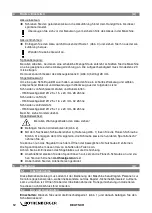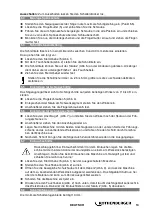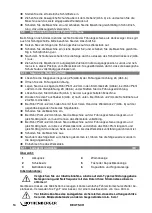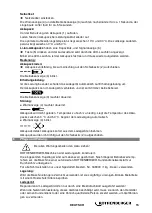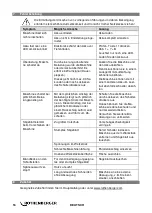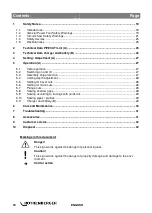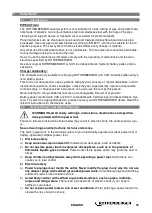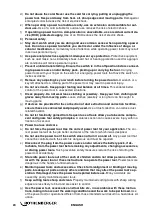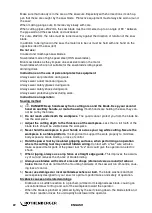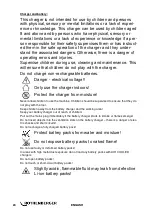
26
ENGLISH
Tilting saw unit................................................................. 0 – 45º
Saw blade diameter max/min .......................................... 125/112 mm (4 59/64, 4 13/32 in.)
Saw blade body thickness ............................................... 1,2 mm (3/64 in.), 1,2 mm (3/64
in.), 1,0 mm (3/64 in.)
Tool cutting width ............................................................ 1,5 mm (0 1/16 in.), 1,6 mm (0
1/16 in.), 1,4 mm (0 1/16 in.)
Saw blade mounting hole ................................................ 20 mm
Hose connector diameter ................................................ 28 mm (1 7/64 in.)
Weight without rechargeable battery ............................... 4,7 kg (10.36 lbs)
Dimensions incl. guide assembly .................................... 210 x 480 x 240 mm (W x L x H)
(8 17/64 x 18 57/64 x 9 29/64 in.)
as cross-cutting system:
Cutting depth 0°/45° ........................................................ 40/27 mm (1 9/16, 1 1/16 in.)
Cutting length at 12/40 mm workpiece thickness ............ 337/292 mm (13 ¼, 11 ½ in.)
Weight with rechargeable battery and guide assembly ... 3,6 kg (7.9 lbs)
Noise pressure level (L
pA
) ................................................ 92 dB (A) ¦ K
pA
1,5 dB (A)
Sound power level (L
WA
) .................................................. 103 dB (A) ¦ K
WA
1,5 dB (A)
The noise level during operation can exceed 85 dB (A). Wear hearing protection!
Measured values determined in accordance with EN 62841-1.
Vibration total value ...............................................................
≤
2,5 m/s
2
¦ K= 1,5m/s
2
The Vibration Total Value quoted in these instructions and the quoted noise emission values
were measured according to standardized measurement procedures and can be used to com-
pare one electric power tool with another. They can also be used to make an initial estimate of
the loading.
The quoted vibration and noise emissions can vary during actual use of the electric
power tool dependent on the way in which the electric power tool is used, in particular
what type of workpiece is being processed.
Establish additional safety measures to protect the operator which are based upon an
estimate of the vibration loading during the actual usage conditions (in doing so taking
account of parts of the operating cycle, for example times in which the electric power
tool is switched and those in which it is switched on but not running under load).
3
Technical Data charger and battery
(B)
Battery:
Charger:
U = Voltage
U1 = Input voltage
C = Capacity
f1
= Input frequency
W = Weight
P1
= Input power
Ic = Charge current
U2 = Charging voltage
t
= Approx. charging time (90% full)
I2
= Max. charge current
Charging voltage .............................
20,75 V DC
Nc
= No. of battery cells
Charging temperature .. 0° - 50° C, 32° - 122° F
W
= Weight
Max. discharging
temperature. ................................
5° - 50° C, 41° - 122° F
Pay attention to the electrical outlet
voltage! Check the label on the
bottom of the charger!
Recharge battery pack before first use!
Содержание 1000003165
Страница 415: ...NOTES ...

